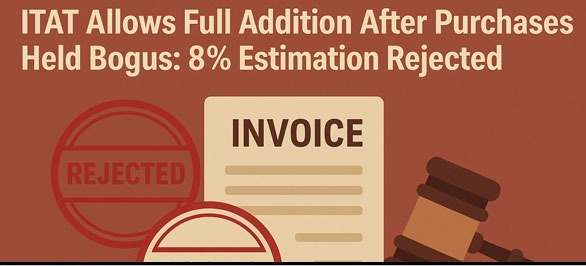Dilip Kumar Seth, J.@mdashA show cause notice, was issued by the Assistant Engineer, being Annex. ''E'' to this writ petition.
2. Mr. Haradhan Banerjee, the Learned Counsel for the Petitioner contends that the Asstt. Engineer in the said notice had pointed out that the power was delegated to him u/s 28(3) of Howrah Municipal Corporation Act, 1980 by the Chief Architect. Drawing my attention to Sub-section (4) of Section 28 Mr. Banerjee submits that the Chief Architect was a delegate of the power from the Mayor in Council or the Mayor, as the case may be. By reason of Sub-section (4) of Section 28 the delegates cannot re-delegate its power to any of its officers.
3. In order to appreciate the contention of Mr. Banerjee, it would be beneficial to quote Section 28 of the Howrah Municipal Corporation Act, 1980 as hereinafter:
Delegation of powers and functions�
(1) The corporation may by resolution delegate, subject to such conditions as may be specified in the resolution, any of its powers or functions to the Mayor-in-Council.
(2) The Mayor-in-Council may by order delegate, subject to such conditions as may be specified in the order, any of its powers or functions to the Mayor or to the commissioner.
(3) Subject to such standing orders as may be made by the Mayor-in-Council in this behalf,�
(a) the Mayor may by order delegate, subject to such conditions as may be specified in the order, any of its powers of functions to the Deputy Mayor or to the Commissioner;
(b) the Commissioner may by order delegate, subject to such conditions as may be specified in the order, any of its powers or functions to any other officer or any employee of the Corporation ; and (c) any officer of the Corporation other than the Commissioner may by order delegate, subject to such conditions as may be specified in the order, any of its powers of functions to any other officer subordinate to him.
(4) Notwithstanding anything contained in this section, the Mayor-in-Council, the Mayor, the Commissioner, or the other officer referred to in Clause (c) of Sub-section (3) shall not delegate�
(a) any of its or his powers or functions delegated to it or him under this section, or (b) such of its or his powers or functions as may be prescribed.
4. A plain reading of Sub-section (4) of Section 28 clearly prohibits re-delegation of a power delegated under Sub-Sections 1, 2 and 3 of Section 28, Sub-section (1) empowers the Corporation to delegate its power by a resolution to the Mayor in council. Sub-section (2) in turn empowers the Mayor in council to delegate such power to the Mayor or to the Commissioner. Whereas Sub-section (3) empowers the Mayor to delegate such power to Deputy Mayor or to the Commissioner in Clause (a). While Clause (b) empowers the Commissioner to delegate such power and functions to any other officers or any employees of the Corporation. Sub-clause (c) empowers an officer, other than the Commissioner, to by order delegate subject to such conditions as may be specified in the order, any of its powers and functions subject, however, to the standing orders as may be made by the Mayor-in-Council in this behalf. While Sub-section (4) prohibits re-delegation of such power.
5. In order to interpret a section it has to be given its full meaning. The legislature is always to be presumed wise. No part of the legislation is redundant. The section has to be construed harmoniously. Meaning has to be given to all the parts so as to advance the scheme and object of the section. A purposeful meaning has to be given to the section while construing the same.
6. In the present case if the construction as has been sought to be made by the Banerjee is accepted, in that event Sub-section (2) and (3) would become redundant and not be given effect to. The all pervasive prohibition of Sub-section (4), as has been sought to be contended by Mr. Banerjee, would then prohibit delegation under Sub-section (2) and (3) respectively. Therefore, such a construction cannot be accepted.
7. On the other hand a harmonious construction would lead us to understand the impact of Sub-section (4) to mean that any delegation made in accordance with Sub-section (2) and (3) and Clauses (a) to (c) thereunder, cannot be re-delegated. In other words the delegations are permissible within the scope and ambit of Sub-Section 2 and Clauses (a) to (c) of Sub-section (3) and not beyond. The delegations made under these provisions are subject to the standing orders made by the Mayor-in-Council in this behalf. Thus Sub-Section 4 prohibits re-delegation of power delegated within the scope and ambit of Sub-Section 2 and 3 Clauses (a) to (c). It does not prohibit the delegation envisaged in Sub-Section 2 and 3 Clauses (a) to (c) respectively.
8. In the present case the power has since been delegated to the chief Architect who under Clause (c) of Sub-Section 3 is empowered to delegate such power to any officer. Sub-Section 4 prohibits only the re-delegation of power conferred by Sub-Section 3 Clause (c). In case the Chief Architect who is an officer of the Corporation other than the Commissioner is empowered to delegate its power to an officer sub-ordinate to him, namely, the Asstt. Engineer and if it is so delegated by the Chief Architect, the same can not be re-delegated by the Asstt. Engineer to any other officer.
9. Thus the contention of Mr. Banerjee cannot be acceded to in the facts and circumstances of the case. In as much as in the present case the Chief Architect has delegated the power to the Asstt. Engineer by virtue of Sub-Section 3 Clause (c) which cannot be further delegated by reason of Sub-Section 4. Sub-Section 4 does not prohibit the Chief Architect to delegate its power conferred on it to an officer sub-ordinate to him in terms of Clause (c) of Sub-Section 3, unless there is a standing order prohibiting such delegation issued by the Mayor-in-Council. My attention has not been drawn to any such standing order which might prohibit the delegation of power conferred on the Chief Architect to an officer sub-ordinate to him under Clause (c) of Sub-Section 3 of Section 28. Thus, the alleged delegation mentioned in the show cause notice is not hit by the mischief of Sub-Section 4 of Section 28. Thus the question raised by Mr. Banerjee cannot be sustained.
10. The second contention of Mr. Banerjee is that since in the earlier order passed by this Court the Corporation was directed to act in accordance with law, therefore, it cannot do so illegally. In view of the observation made above the second point cannot be sustained and is no more available to Mr. Banerjee.
11. The third point raised by Mr. Banerjee was that the Petitioner is the earlier writ petition Smt. Usha Rani Sen and Ors. had filed another writ petition which is still pending. In the mean time, they had also filed a suit before the Civil Court and as such they cannot maintain this writ petition before this Court. So far as this question is concerned after having filed a Civil Suit the said Usha Rani Sen and Ors. cannot maintain the writ petition before this Court, in as much as a person cannot prosecute parallel proceedings for the same relief. Therefore, the writ petition No. 13998 (w) of 2000 is treated as on day''s list and after hearing Mr. Prosanta Kumar Banerjee, appearing for the Petitioner Usha Rani Sen and Ors. the same is dismissed with liberty to Usha Rani Sen and Ors. to prosecute the suit and obtain appropriate relief as may be available to them in the said proceedings.
12. Since the question of illegality in respect of the notice that was raised cannot be sustained, there cannot be any infirmity in the order impugned.
13. Be that as it may, Mr. Banerjee had raised a question that he had asked for adjournment on the ground of his illness and that he had also applied for regularisation (Annex. ''G'') of the deviation made. In the earlier writ petition the Petitioners were Respondent Nos. 6 and 7 respectively. As such they are bound by the order passed in the earlier writ petition. Therefore, the question is no more open to them. However, since they were to be given opportunity and that there is an application for regularisation, before implementing the impugned order the Respondent Chief Architect may dispose of the Petitioners'' application for regularisation after giving opportunity to the Petitioners and the said Usha Rani Sen and Ors. with regard to the question of regularisation, if permissible in law. In case it is found that the deviated pertion cannot be regularised in that event it will be open to the Corporation to implement the order impugned. The application for regularisation is to be disposed of within a period of six weeks from the date of communication of this order. However, the Petitioners shall not make any construction whatsoever in the meantime in the disputed site.
14. The writ application is thus disposed of. There will be no order as to costs.
15. If an urgent Xerox certified copy of this order is applied for the same may be supplied as early as possible.

